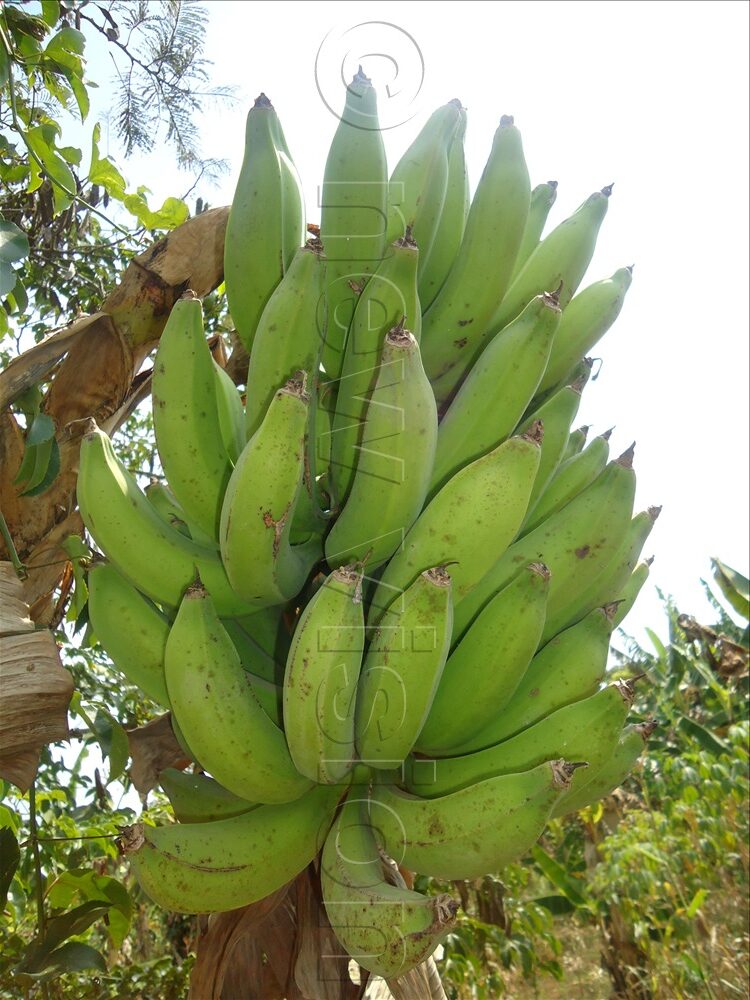By Umar Nsubuga
Plantain farming can be a lucrative venture for commercial farmers, but to ensure maximum yields and profits, controlling and preventing diseases is essential.
Plantains are highly susceptible to a range of diseases and pests that can impact growth and reduce yields.
Patrick Kirunda, a successful plantain farmer, and Gideon Zakke, a skilled agronomist, give advice on preventing disease in plantains and outline best practices for calculating costs, returns, and overall farm profitability.
Understanding key plantain diseases and their prevention
According to Zakke, plantains are susceptible to several diseases, with the most common being Panama disease (Fusarium wilt), Black Sigatoka, and Banana bunchy top virus (BBTV).
“Each of these diseases can devastate a plantain farm if not carefully managed,” Zakke explains.
He explains that understanding the causes and symptoms of each disease is the first step to prevention. Fusarium wilt, for example, is a soil-borne fungus that infects the roots and causes wilting and yellowing. BBTV is a viral disease spread by aphids, causing stunted growth and deformities in plantain bunches.
Zakke stresses the importance of early intervention.
“Prevention should start before planting,” he advises.
He says using disease-free seedlings from reputable nurseries is crucial.
“Practising crop rotation by planting other crops that do not host the pathogens between plantain planting seasons can reduce disease spread,” he explains.
For Kirunda, sanitation has been critical in preventing diseases.
He regularly disinfects his farm tools and avoids moving soil or plants from one part of his farm to another.

“I have learned to sterilise equipment and keep infected plants separate. It’s time-consuming, but it has saved my crops,” Kirunda notes.
He also uses organic pesticides and ensures his farm has good drainage, as excess moisture encourages fungal growth.
Optimising soil health and nutrient management
Healthy soil is fundamental to preventing disease, according to Zakke. Plantains thrive in well-drained, fertile soil with a balanced pH level.
To maintain optimal soil health, he recommends regular testing of soil nutrient levels to guide fertilization.
“For plantains, nitrogen, phosphorus, and potassium are essential,” he explains.
Kirunda has implemented a balanced fertilisation plan, adding organic compost to enrich the soil.
He avoids excessive nitrogen, which can make plants more susceptible to certain fungal infections.
Mulching is another preventive measure that both Kirunda and Zakke advocate.
Mulch not only conserves soil moisture and regulates temperature but also prevents disease by suppressing weed growth and maintaining soil structure.
Organic mulches, like dried leaves or grass, decompose over time and further enrich the soil, supporting healthier plantain growth.
Calculating the right inputs and costs
For commercial plantain farming, accurate calculation of inputs and costs is key to profitability.
Zakke suggests breaking down the cost of essential inputs, including disease-free seedlings, fertilisers, and pest control products.
For example, Kirunda calculates that he spends approximately sh600,000 per acre on seedlings, sh100,000 on organic fertilisers, and another sh100,000 on organic pest control measures.
He also includes labour costs, estimating his total investment at around sh100,000 per acre.
Labour is a significant aspect to consider, especially when it comes to tasks like planting, mulching, weeding, and pruning.
Zakke recommends keeping detailed records of all expenditures and regularly updating them.
“Accurate calculations allow you to assess your break-even point and estimate potential profits based on yield,” Zakke emphasises.
Kirunda adds that monitoring expenses help him see where he can reduce costs without sacrificing quality. For instance, by producing his own compost, he has reduced his reliance on commercial fertilisers, thus saving on input costs.
Projecting yields and calculating returns
With effective disease prevention and management practices in place, plantain farmers can enjoy higher yields and better returns.
Kirunda reports an average yield of 30 bunches per acre when conditions are favourable. At a market rate of approximately sh25,000 per bunch, he estimates an income of sh750,000 per acre.
Subtracting his sh100,000 input costs, Kirunda projects a profit of sh650,000 per acre.
Zakke encourages farmers to continually analyze the market to ensure they are selling at competitive prices.
He advises setting aside a portion of earnings to reinvest in the next planting cycle, which helps maintain crop health and consistency in yields.
Storing plantains in well-ventilated areas post-harvest can prevent loss due to spoilage, further boosting returns.





